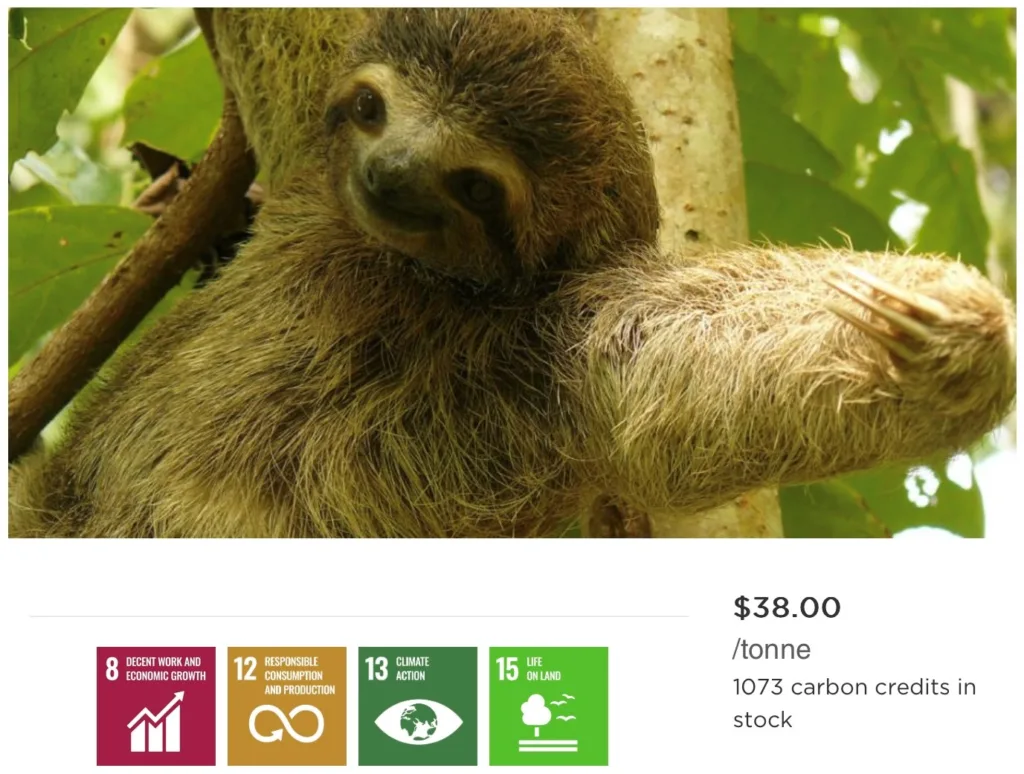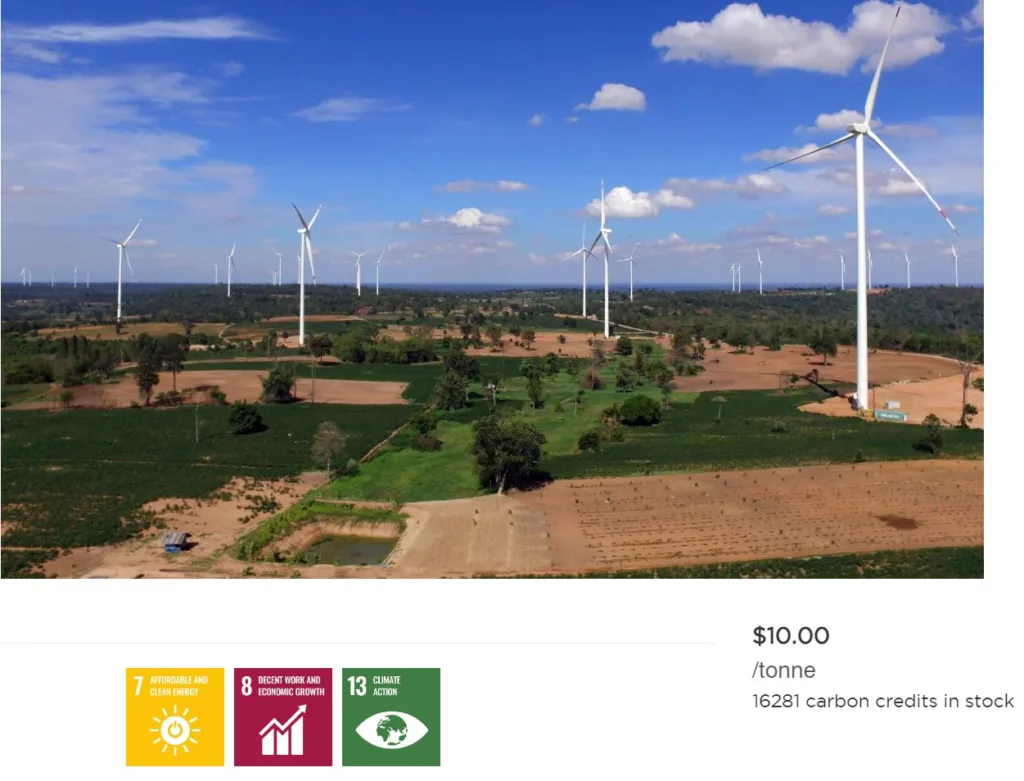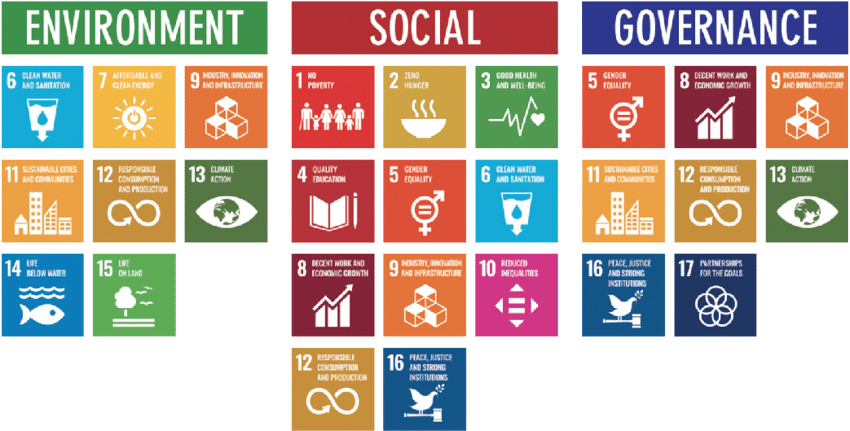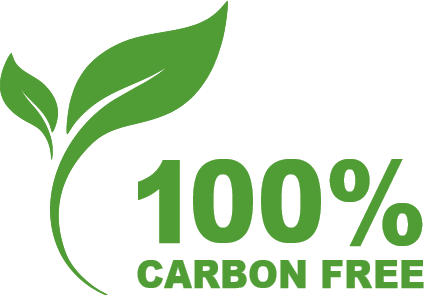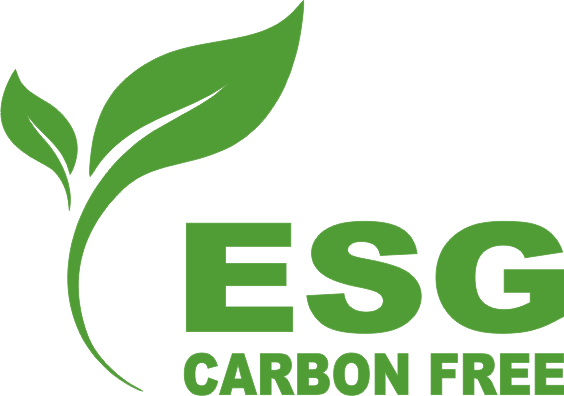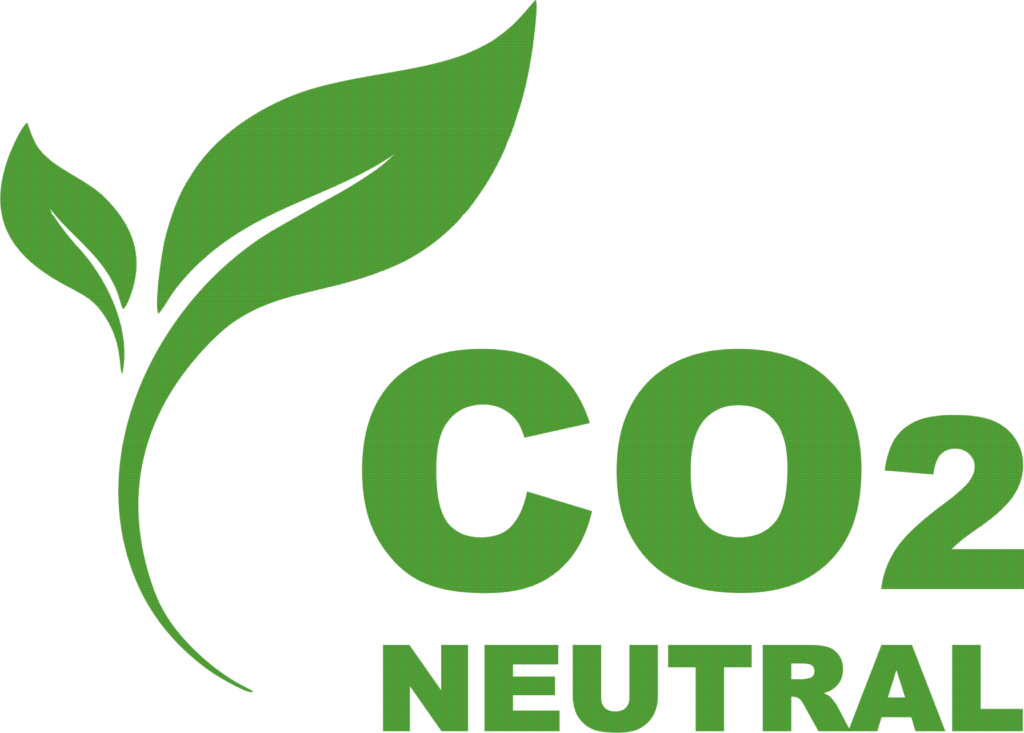Offsetting
100% Carbon Free - Ideas and solutions pushed to reality 0.00% CO2 for all.
We offer comprehensive offset solutions for companies and public institutions, directly or through certified partners with a calculable carbon footprint of their goods, supplies and services, so that customers do not "suffer" from the increase in their carbon footprint by such investments.
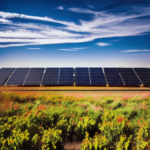 A, Photovoltaic energy
A, Photovoltaic energy
- Photovoltaic energy, also known as solar energy, is a source of renewable energy that can make a significant contribution to reducing greenhouse gas emissions. This depends on the conversion of light energy from the sun into electricity through photovoltaic cells.
- Reduced emissions: photovoltaic systems do not cause any direct emissions when generating energy, which is a key factor in the fight against climate change. There is an emissions process involved, but once installed and in operation, they produce no additional emissions.
- Sustainability and efficiency: photovoltaic energy is renewable, which means that it does not deplete any natural resources in its production. In addition, modern solar panels have high efficiency and a long lifetime, which increases their sustainability.
- Rapid technology development: the development of photovoltaic technology is rapid and continuously brings improvements in efficiency and cost-effectiveness, making these systems even more attractive for emission reduction.
- Photovoltaic energy is an essential tool in the fight against climate change, providing a clean, cost-effective and renewable alternative to fossil fuels. Its application in the provision of energy for homes, industry and services can make a significant contribution to global efforts to reduce emissions.
 B, Wind energy
B, Wind energy
- Wind power is one of the most important sources of renewable energy, harnessing the dynamics of the wind to generate electricity. It has the potential to contribute to significant reductions in greenhouse gas emissions.
- Reduced emissions: the use of wind energy does not lead to direct emissions, making it a carbon-neutral energy source. Although emissions are produced in the manufacture of wind turbines, these are offset during the turbine's operating period when it emits no greenhouse gases.
- Sustainability and efficiency: wind energy is one of the most efficient sources of renewable energy. Wind farms have huge potential in terms of emissions reduction and are also capable of generating significant amounts of energy, which increases their attractiveness as a sustainable solution.
- Advances in technology: recent decades have brought significant advances in wind power technology that have improved efficiency and reliability. This has allowed a significant expansion of their application and increased their contribution to emission reductions.
- The use of wind energy can be a key aspect in the fight against climate change, as it offers a carbon-neutral, renewable energy source with a high output. Moreover, its further deployment can provide important opportunities for economic growth and job creation, while helping to ensure a cleaner, healthier environment for future generations.
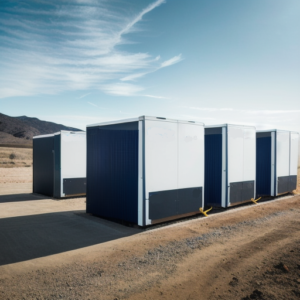 C, Battery energy storage
C, Battery energy storage
- Battery energy storage is a technology that allows excess energy to be stored for later use. These systems can contribute to reducing global greenhouse gas emissions by optimising the use of renewable resources.
- Reducing emissions: battery energy storage allows for a smoother integration of renewable energy sources such as solar and wind into electricity systems, so that dependence on fossil fuels can be reduced. In this way, these systems can contribute to reducing greenhouse gas emissions.
- Efficiency and Flexibility: with its ability to store and release energy at the times needed, battery energy storage contributes to significant efficiency and flexibility in power systems.
- Technological advances: there have been significant advances in battery technology in recent years. Increased efficiency, longer life and falling battery costs are creating new opportunities for wider battery use and leading to reduced emissions.
- Battery energy storage is a key component of future sustainable energy infrastructure that can help reduce greenhouse gas emissions. Their use in synergy with renewable energy sources can make a significant contribution to global climate change targets.

D, Hydrogen technology
- Hydrogen fuel cells (HFCs): hydrogen fuel cells are a clean and efficient form of electricity generation. They use an electrochemical reaction between hydrogen and oxygen to create electricity, with water as the only by-product. VPCs are ideal for electromobility, as an alternative to internal combustion engines, and reduce greenhouse gas emissions.
- Hydrogen combustion: hydrogen can be used directly as a fuel in internal combustion engines. The combustion of hydrogen does not produce carbon dioxide (CO2), but only water. This means that burning hydrogen has no impact on the greenhouse effect or air pollution in the form of CO2 emissions.
- Hydrogen production from renewable sources: hydrogen production can be carried out by electrolysis of water using electricity from green sources such as solar power plants or wind turbines. This production method ensures minimal CO2 emissions and allows the use of renewable energies to produce hydrogen, thus reducing the overall carbon footprint.
- Hydrogen as an energy storage: hydrogen can serve as an energy storage for areas with a high percentage of renewables where energy availability is time-dependent. Hydrogen can be produced during periods of energy surplus and then used when energy is scarce, increasing efficiency and minimizing energy loss.
- Cross-sectoral cooperation: hydrogen technologies have the potential to integrate different sectors such as electro-mobility, energy and industry. The use of hydrogen in multiple sectors enables a reduction of greenhouse gas emissions at an overall level and supports sustainable development. Reducing emissions through hydrogen technologies offers many benefits in the form of clean energy and minimised environmental impact. However, it is also important to consider the production of hydrogen from sustainable sources and the efficient use of this emerging technology in relation to existing infrastructures and policies.

E, Heat Pumps
- Heat pumps are efficient heating and cooling devices that transfer heat from one place to another. These systems can make a significant contribution to reducing greenhouse gas emissions by reducing reliance on fossil fuels for heating and cooling.
- Reduce emissions: heat pumps work by moving heat rather than producing it, which is highly energy efficient and significantly reduces the carbon footprint. Although emissions are generated when they operate (in the case of fossil fuel-based grid power), they are still much lower compared to traditional heating systems.
- Efficiency and savings: heat pumps are very efficient, they can produce three to five times more energy than they need to operate. This high coefficient of performance leads to significant energy savings and thus lower emissions.
- Technology development: although heat pump technology has been around for a long time, ongoing research and development is leading to significant improvements in efficiency, reliability and availability, which could lead to even greater emission reductions in the future.
- Heat pumps are an important part of the transition to a low-carbon energy infrastructure. When properly applied and supported by renewable energy sources, these systems can make a significant contribution to reducing greenhouse gas emissions and helping to meet climate change targets.

F, Cogeneration unit
- Combined Heat and Power (CHP) units are systems that simultaneously produce electricity and heat from a single fuel. By making efficient use of the heat produced, these units significantly increase energy efficiency and contribute to reducing emissions.
- Emissions reduction: CHP units use fuel more efficiently than traditional methods of energy production. As a result, CHP units can reduce the need to generate heat and electricity separately, leading to more significant reductions in greenhouse gas emissions.
- Efficiency and Savings: CHP systems can achieve energy efficiencies of up to 90%, which is significantly higher than traditional methods of heat and power production. Higher efficiency means lower fuel consumption and therefore lower emissions.
- Flexibility:CHP units are flexible and can be designed to meet the specific needs of different applications. This means they can be an effective solution for different types of buildings or industrial facilities.
- CHP units are an effective tool to reduce greenhouse gas emissions and increase energy efficiency. They represent a potential route to more sustainable energy use and can make a significant contribution to achieving climate change targets.
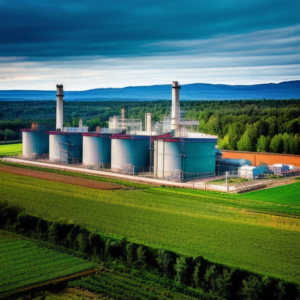
G, Biomass
- Biomass as a renewable energy source: biomass includes organic material such as plant waste, wood or biodegradable waste. Using biomass for energy is more environmentally friendly than fossil fuels because burning biomass releases only the carbon dioxide (CO2) that the biomass has absorbed during its growth.
- Biomass and bioenergy: Biomass can be used to produce bioenergy through combustion, gasification or fermentation. These processes produce heat, electricity or biofuels as a substitute for fossil fuels. The use of bioenergy from biomass reduces greenhouse gas emissions and helps to replace polluting fossil fuels.
- Biogas and biomethane: Biogas and biomethane are the products of anaerobic fermentation of biomass, which produces a mixture of methane and carbon dioxide. These gases can then be used for heating, electricity generation or as a replacement fuel for vehicles. The use of biogas and biomethane improves energy efficiency and reduces emissions compared to the combustion of traditional fuels.
- Use of waste and agro-biomass: The use of biomass from plant waste and agro-biomass has a high potential to reduce emissions. The collection, treatment and use of these wastes and by-products of agricultural and forestry production can reduce waste, generate energy and minimise the need to burn fossil fuels.
- Sustainable management of forests: forests are key to sequestering carbon and reducing greenhouse gas emissions. Sustainable management of forest areas ensures that woody biomass is properly used and regenerated in a renewable way. This ensures a sustainable supply of biomass while protecting biodiversity and ecosystem services of forest ecosystems.
- The importance of research and innovation: research and innovation are essential for the further development and efficient use of biomass. Investment in biomass research and technological development can lead to new and more efficient ways of using biomass, leading to even greater reductions in greenhouse gas emissions. The use of biomass to reduce emissions represents a great potential for an environmentally friendly and sustainable solution for energy and industry. It is important to encourage investment and innovation in this area so that we can use this renewable energy source efficiently and reduce our carbon footprint.
 Photovoltaics is a technology that uses sunlight to generate electricity. Solar panels or solar cells provide the conversion of sunlight into electricity.
If your solar panels produce more energy than you consume, you can sell this excess energy to the electricity grid and get credit for green electricity supplied. This credit is a form of energy offset.
Photovoltaics is a technology that uses sunlight to generate electricity. Solar panels or solar cells provide the conversion of sunlight into electricity.
If your solar panels produce more energy than you consume, you can sell this excess energy to the electricity grid and get credit for green electricity supplied. This credit is a form of energy offset. 
Wind turbines operate on a similar principle, where wind energy is converted into electricity in wind turbines. The energy can be consumed immediately or stored in batteries for later use. When you generate more wind power than you consume, you can sell it back to the grid and get credit for green electricity supplied.
 Battery storage are used to store surplus energy from photovoltaics or wind that is not used immediately. This energy is stored in batteries and can be used later when it is needed, for example during the night or during periods of low renewable energy production. In this way, you can use renewable energy even when direct sunlight or wind is not available.
Battery storage are used to store surplus energy from photovoltaics or wind that is not used immediately. This energy is stored in batteries and can be used later when it is needed, for example during the night or during periods of low renewable energy production. In this way, you can use renewable energy even when direct sunlight or wind is not available.
Energy offsets for photovoltaics, wind and battery storage can thus minimize or completely eliminate dependence on electricity from conventional sources. This helps to reduce harmful emissions to the environment and contribute to sustainable and clean energy.

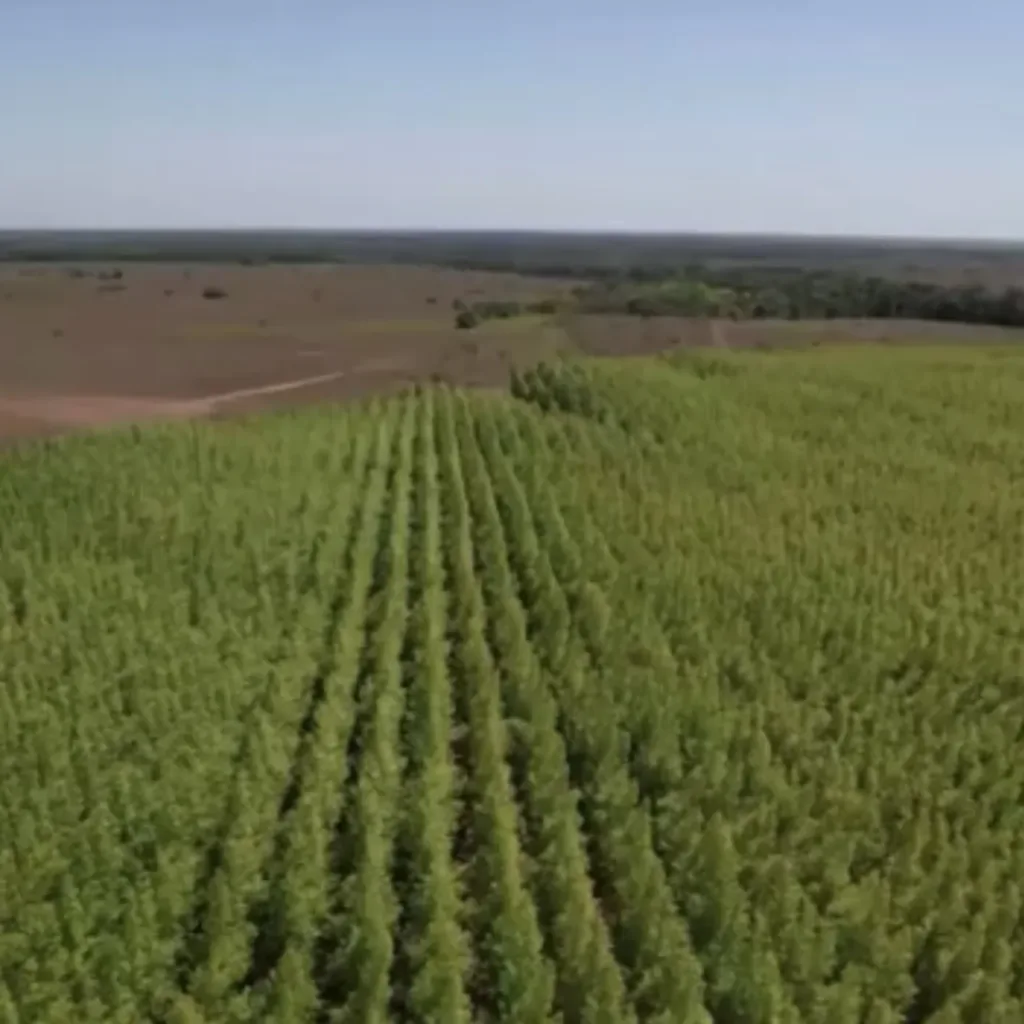
Example of our customers' and partners' own green offsets on our farms (Comparison 2020 and 2022)
"We create green offsets and thus actively contribute to CO2 reduction"
100% Carbon free a.s. comprehensively ensure all the sequential investment planning steps so that your investment costs are sustainable in the long term and at the same time that your investments are valued and at the same time recorded in your company's financial statements, thus also improving your company's economic evaluation.
Investing in tree planting and creation new - own carbon credits (CO2) has various benefits that will be positively reflected in the decentralized structure of ESG (Environment, Social and Governance) factors, and so such an investment will improve the overall ESG score of the company.
1. Environment:
a, CO2 absorption - Trees absorb CO2, which helps reduce greenhouse gas emissions. This can improve the environmental score in your ESG rating.
b, Promoting biodiversity - Planting trees can help improve biodiversity and ecosystem health, which can equally contribute to a higher environmental score.
2. Socialnot benefits :
a, Job creation - Tree farms can create employment opportunities, which will positively translate into social scores.
b, Sustainability Awareness - This initiative can also help raise awareness and education on sustainability.
3. Governance (Management) Benefits :
a, Demonstrating accountability and transparency - Investing in sustainable projects demonstrates responsible corporate behaviour and commitment to sustainable development. This can help a company to increase its Governance score.
b, Creation of carbon credits - These credits can be used to offset the company's emissions or can be sold to other companies. This can also be positively included in the governance score as it shows the pro-activity of the company in matters of climate change.
How this specifically translates into your company's ESG score depends on the specific methodology used by ESG rating agencies. Each may take different factors into account and adjust the score according to how important those factors are to the overall rating.
It is therefore important to consult the following details with us - the ESG expertto better understand the intent of your investment in tree planting and the generation of carbon credits in the ESG assessment agency that calculates your company's ESG score.
Investment in "own" Carbon credits will provide you with a fixed - projected CO2 offset price (in addition to other significant ESG score benefits), you will not be tied to market conditions and prices that will interfere significantly with your business.
Offset can also be purchased. We divide it into :
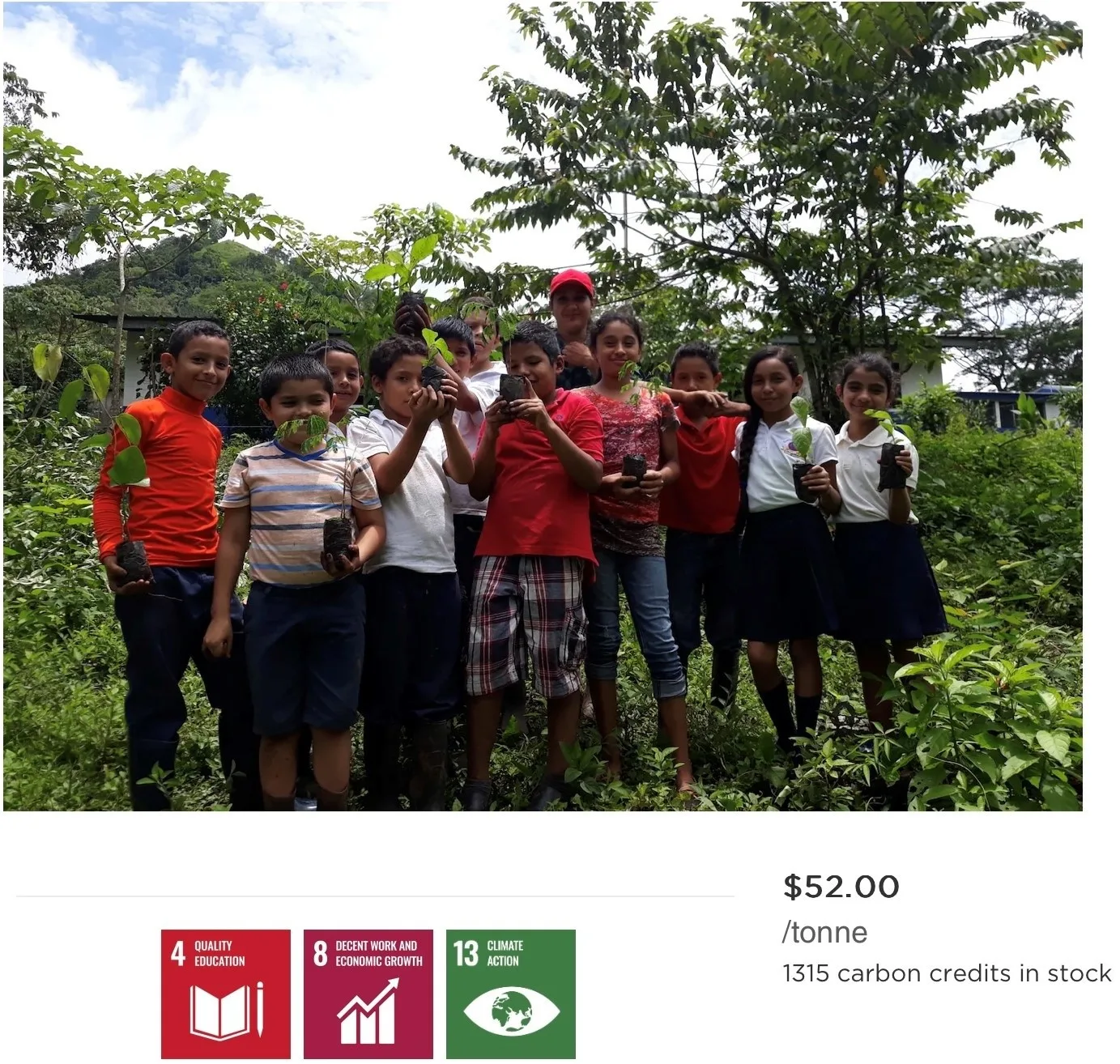 1, Reforestation - planting forests here we buy "green offsets" offered by other companies and verify them according to international standards. In this way, they ensure that your carbon footprint is reduced without your investment and planning, with the risk of high prices in the future.
1, Reforestation - planting forests here we buy "green offsets" offered by other companies and verify them according to international standards. In this way, they ensure that your carbon footprint is reduced without your investment and planning, with the risk of high prices in the future.
2, Energy offsetwhich you can also buy from providers, it's a way to offset your energy consumption from conventional sources by supporting other companies' renewable energy projects and thereby reducing your carbon footprint.
These projects may include solar power plants, wind farms, battery storage, hydroelectric power, or other clean energy sources.
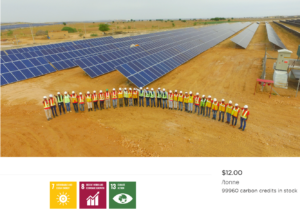 When you buy an energy offset, you pay for creditsrepresenting the amount of renewable energy produced by other companies - providers / carbon credits. This credit can then be used to offset your own fossil fuel energy consumption.
When you buy an energy offset, you pay for creditsrepresenting the amount of renewable energy produced by other companies - providers / carbon credits. This credit can then be used to offset your own fossil fuel energy consumption.
There are price risks associated with this, in that the price of green or energy offsets can be influenced by the market.
If the demand for green or energy offsets greater than supply, this can lead to higher to high prices.
From 2027, the ESG (Environmental, Social and Governance) report an important factor. Companies that score well on ESG reports demonstrate their commitment to sustainability and environmental protection. Information from ESG reports can help you choose an energy offset provider that aligns with your values and goals. It is important to research providers and get transparent information about their renewable energy projects, pricing and their ESG reports so that you can make a well-informed decision when purchasing an energy offset.
However, if you are to achieve a "good" ESG rating and do not use your own investment activities, you will have to reckon from 2025 onwards with by significantly increasing the price of energy offsets, or green credits.
In the ESG assessment, own green or energy offsets have a higher bonus than just purchased ones.
